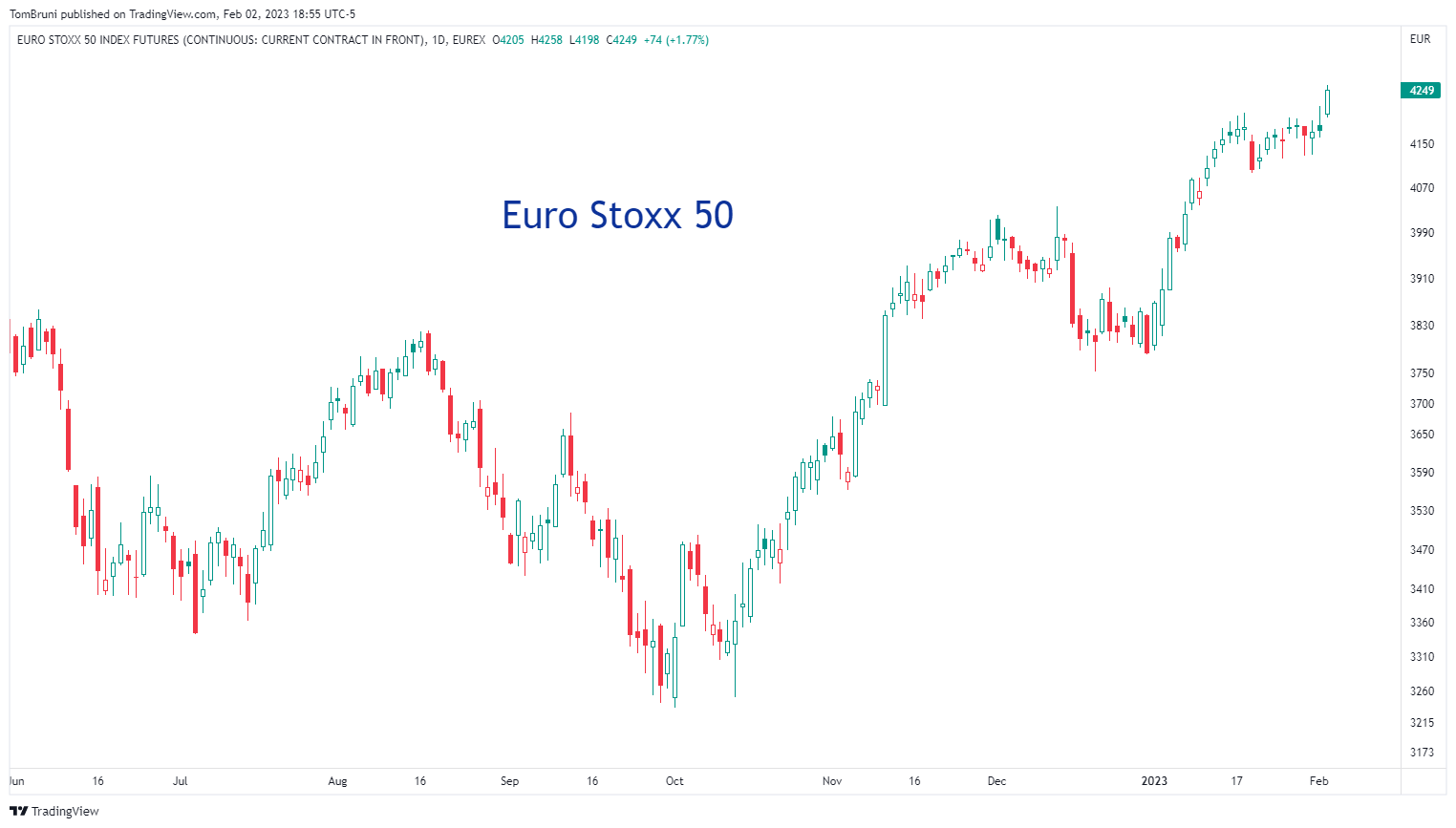Yesterday the U.S. Federal Reserve raised interest rates by 25 bps and set the stage for ongoing rate increases as it continues to battle inflation. 📰
Today, we heard from the European Central Bank (ECB) and Bank of England (BOE), which also continued tightening. Let’s see what they had to say.
The European Central Bank raised rates by 50 bps, moving their key rate to 2.50%. It reiterated that it will“stay the course in raising interest rates significantly at a steady pace.” It also left no room for interpretation around its next meeting, saying it intends to hike another 50 bps in March. 🔺
The bank hiked rates four times in 2022 after leaving rates in negative territory since 2014. However, headline and core inflation hit more than 40-year highs last year. And despite some short-term improvements, prices remain significantly above their 2% long-term target. That leaves the ECB no choice but to continue aggressively tighten financial conditions.
Despite the continued tightening and risk, the Eurozone’s Q4 GDP came in at a positive 0.1% vs. the 0.1% decline expected this week. This led to ECB President Christine Lagarde saying, “The risks to the outlook for economic growth have become more balanced…” as the region secures energy supplies and other measures of the economy improve.
Moreover, her outlook on the economy improved as of late, saying, “Overall, the economy has proved more resilient than expected and should improve over the coming quarters.”
Meanwhile, the Bank of England followed a similar script. The central bank also raised rates by 50 bps and offered a more optimistic economic outlook. 🔺
Its committee voted 7-2 for the second consecutive 50 bps hike, which took its key interest rate to 4%. Unlike the ECB, however, its statement indicated that smaller hikes and an eventual end to the tightening cycle could be ahead. In addition, analysts noted that the bank dropped the word “forcefully” from its statement, as it’s happy with the disinflation progress.
In its forecast, the central bank expects annual CPI inflation to fall towards 4% by the end of the year. It also refined its economic outlook, predicting a shorter and shallower recession than at its November meeting. In that regard, the country may avoid what was previously forecasted to be its most prolonged recession on record. 👍
Meanwhile, the market’s implied path includes rates rising to 4.5% in mid-2023 before falling back to 3.25% over the next three years.
To recap, the Bank of England is on a similar path to the U.S. Federal Reserve. Inflation is coming down at a steady pace, and its economy is holding up better than expected. Europe, however, has seen much of its disinflation come from volatile inputs like energy and food prices. Its core goods and services inflation remains far too high and sticky, which is why the ECB is maintaining its hawkish stance. 📝
Across the board, it appears that economic optimism is improving. Inflation in most countries has begun to come down or at least stop rising. But there’s still a lot of work to be done, and the economic picture remains far from rosy.
Ultimately, whether or not the market is getting ahead of itself remains to be seen. For now, though, it’s rally time. 🤷

